The Apiaceae, the plant family that gives us carrots, parsnips and parsley, among other staple foods, also contains some horrors. Let me list them: hemlock, hemlock water dropwort, fools' parsley and giant hogweed,and this list is not exhaustive. Heracleum montegazzianum, the giant hogweed, looks pretty, with its foam of white flowers that lure the unsuspecting to draw closer. As the plant looms over you, as it can grow very tall, you might be tempted to pull off a sprig to take home, and then your problems begin. The sap is phytotoxic, and once on your skin it reacts with sunlight to produce a very nasty rash, a painful reddening of the skin that produces an powerful urge to scratch. And you dare not get it in your eyes! The skin needs protection from light for at least several days, if you are lucky, and some think that it might produce lifelong damage.The British and the US authorities are as one on this matter, for they both insist that you are not allowed to plant this weed in your gardens, and in the USA you cannot transport it over state boundaries.Many gardeners, farmers and countryside managers simply destroy the stuff. To be brutally honest, as a grandfather who would like to take his grandchildren walking, I don't want this weed around and am happy that it be eradicated.The plant often grows on riverbanks, so you need to take especial care when walking in such places.
We do not have poison ivy growing in Britain. This plant is in the genus Toxicodendron, whereas our native ivy is in the genus Hedera. We don't normally count ivy as a weed, it is simply part of the landscape, but tree growers might think it a weed sometimes.
There are others that are environmentally destructive, and I am thinking of Japanese knotweed and Himalayan Balsam. I saw a mass of Himalayan balsam while taking a Sunday walk with my wife Maureen. We were strolling down the embankments in the Mersey Valley, but part of our walk took us along the banks of a small stream, which were becoming smothered with the purple flowers of this invasive weed. It is a beauty, never say that weeds are ugly, but it clogs up water courses. Introduced by Victorian plant hunters in the nineteenth century, it has naturalized too well and the blockages that it causes disrupt water flow in places and smother native riverbank flora.
Then there is Japanese knotweed. If you are selling your house, the questionnaire asks whether you have suffered Japanese knotweed. If you have, it is very difficult to sell, as the sale value drops savagely, for it can break through floors and needs specialist treatment. I have seen it kill a small elder tree, as the weed starved the elder of resources when it took over the embankment on which the tree stood, and it can cause riverbanks to collapse. Someone in the nineteenth century introduced it because it looked nice! Thanks! We are having to have a national eradication strategy to deal with it. It is illegal to grow the stuff and you must destroy any plants on site


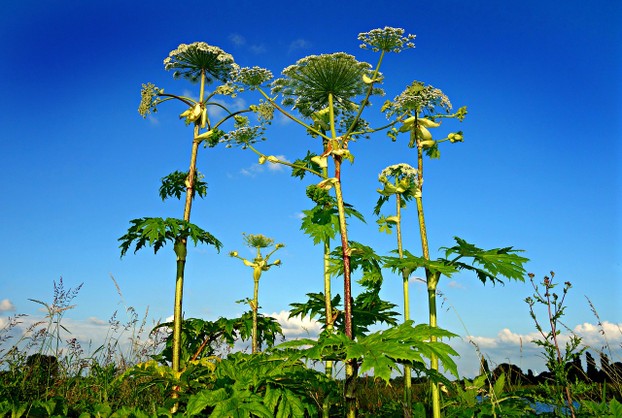





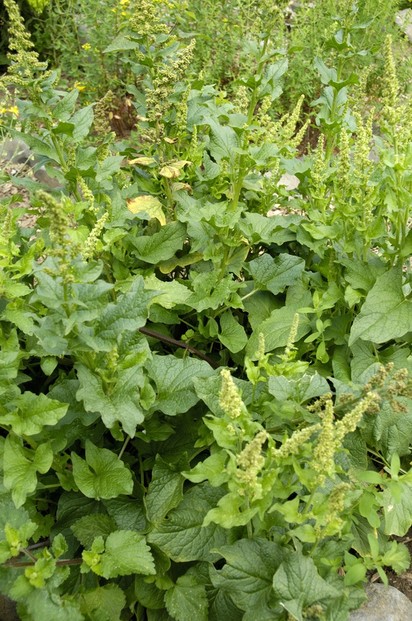

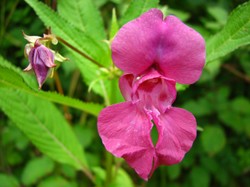

 Women of the Gospelson 10/11/2025
Women of the Gospelson 10/11/2025
 Religious Gardenson 08/25/2025
Religious Gardenson 08/25/2025
 Doctor of the Church: John Henry Newmanon 08/03/2025
Doctor of the Church: John Henry Newmanon 08/03/2025
 Restoring the Palm Houseon 07/16/2025
Restoring the Palm Houseon 07/16/2025

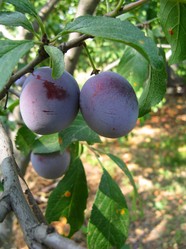
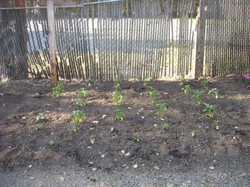
Comments
The shape of the leaf suggests a fat creature.
The second paragraph to the third subheading, But you can eat them, mentions fat hen (Chenopodium album).
The commoner common names occur as goosefoot, lamb's quarters and wild spinach over here.
What would prompt the designation fat hen?
No specific Henry. In German the weed is known as Gutenhenrich, good Henry. Where the word king fits in no one knows, but I suspect that it refers to Henry the Eigth, who was so murderous that failing to call him good could have fatal consequences.l
The second paragraph to your last subheading, But you can eat them, describes Good King Henry as a "quite palatable" weed.
Which King Henry serves as the namesake?
That's good, Candy. I note that your grandmother, who obviously knew what she was doing, did not eat the stem, which confirms that it may not be edible. I do like Italian cooking!
As my memory serves (about 60 years ago), she sauteed the flower and I do remember some leaves. My grandmother was born in Italy, so most things were cooked one way or another with olive oil and garlic!
In Victorian times the poor sometime earned a living digging up dandelion roots to sell to producers of dandelion coffee. The leaves and the yellow head can be used in salads. There is an issue about the stem, for almost all plants with a milky sap are inedible. Some say that dandelion is the exception, but others disagree. I have always played safe on this matter and not eaten the stem.
If you make dandelion wine, be careful of the side effect. The dandelion contains a substance that facilitates urination, which can be a useful medical aid. One glass is fine, but if you have two or more, be prepared to go to the toilet.
I remember an ex sister of law of mine and I picking dandelions to make dandelion wine round about 1973.
I am sure they have nutritional qualities.
Thanks for this, Candy, as this is the first time that I have hard of sauteed dandelion. Which bits did she use?
My grandmother pulled up dandelions from everywhere. Sometimes we had to stop the car so she could get out to pick them. We had them in salads or sauteed.